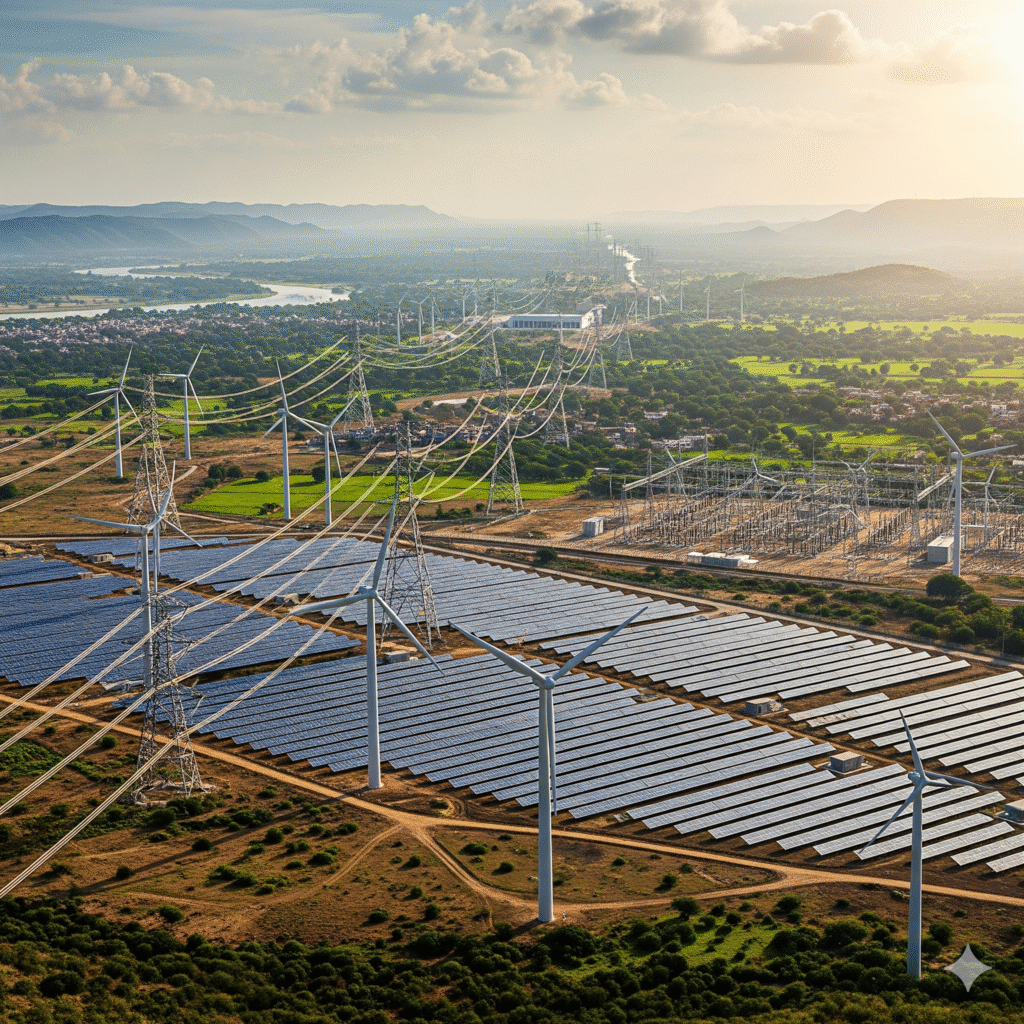The Central Electricity Regulatory Commission (CERC), through its notification dated 31.08.2025, has introduced the 3rd Amendment to the General Network Access (GNA) Regulations, 2022. This landmark reform is a game-changer for renewable energy (RE) integration, energy storage deployment, and grid connectivity. It not only streamlines processes but also ensures optimal utilisation of India’s transmission network, taking the country a step closer to its net zero and decarbonisation goals.
What is General network acess
General Network Access (GNA) is a framework in the power sector that allows electricity consumers, such as industries, commercial establishments, or open access consumers, to use the transmission and distribution network of a utility to receive or transmit power from sources other than their local distribution company.
🔑 Key Highlights of the CERC GNA Amendment
1. Bank Guarantee & Application Fees
- Transparent provisions for refund or forfeiture of bank guarantees (BGs) and application fees.
- Promotes financial discipline and reduces ambiguity in the connectivity process.
2. BBMB Recognised as ISTS
- Bhakra Beas Management Board (BBMB) officially included under the Inter-State Transmission System (ISTS).
- Special framework for RE projects (≥5 MW & <50 MW, with/without storage) to connect via the BBMB network.
3. Wind & Storage Flexibility
- Wind projects and energy storage systems (ESS) ≥50 MW can now opt for non-solar-hour access or round-the-clock (RTC) access.
- Strengthens integration of firm, reliable, green power into the national grid.
4. Connectivity Quantum Linked to Capacity
- RE generators with Letter of Award (LOA) or Power Purchase Agreement (PPA) can apply for GNA up to their installed capacity.
- Excess capacity installation permitted, provided no augmentation of ISTS is required.
5. Auxiliary Power & Charges
- For auxiliary/start-up power drawl, applicable T-GNA or TDR charges will be payable under the Sharing Regulations.
6. Standalone ESS Connectivity
- Standalone ESS developers must apply for connectivity equal to their maximum injection capacity.
7. Phased Connectivity for RE Parks
- RE parks above 500 MW are eligible for phased connectivity, enabling large projects to be commissioned in stages.
8. Terminal Bay Provisions for Wind/ESS
- Wind-based REGS (≥50 MW, with/without ESS) can connect via:
- A dedicated transmission line, or
- An existing allocated bay, shared with solar-hour projects.
⚡ Why This Matters for India’s Net Zero Goals
This CERC amendment reflects a progressive vision for India’s energy transition. By enhancing the GNA framework, it enables:
- ✅ Optimised evacuation of renewable energy without expensive transmission upgrades.
- ✅ Cost savings, by deferring high-capex network expansion.
- ✅ Faster renewable energy integration, supported by flexible storage solutions.
- ✅ 24×7 green power delivery, boosting reliability and investor confidence.
It ensures that grid connectivity is no longer a bottleneck, but rather a catalyst for clean energy growth.
🌟 Conclusion
With this amendment, CERC has reinforced its role as a future-ready regulator, striking a balance between:
- Seamless renewable energy integration
- Efficient transmission system utilisation
- Robust financial prudence
This bold step makes India’s GNA framework smarter, more flexible, and aligned with the nation’s net zero roadmap. The message is clear: CERC is powering India’s clean energy revolution.

Leave a Reply